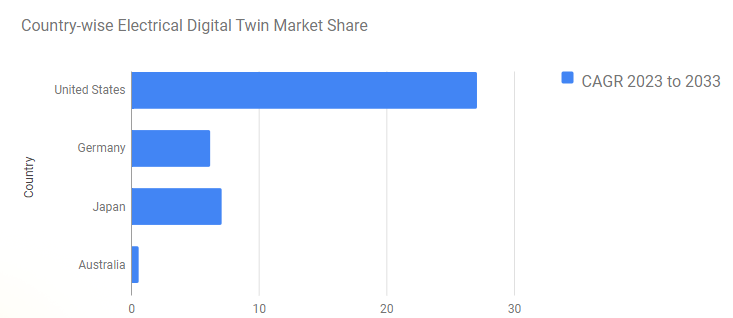The electrical digital twin market is surging, revolutionizing how we design, manage, and optimize electrical systems. These digital replicas of real-world electrical grids, power plants, and equipment offer a powerful tool for predictive maintenance, enhanced efficiency, and improved decision-making. Let’s delve into the key driving factors, exciting trends, and promising opportunities shaping this electrifying market.
Driving Forces: Electrifying the Need for Digital Twins
Several factors are fueling the growth of the electrical digital twin market:
- Rising Demand for Grid Modernization: Aging infrastructure and the integration of renewable energy sources necessitate smarter grids. Electrical digital twins offer real-time insights to optimize grid operations and ensure stability.
- Focus on Predictive Maintenance: By analyzing data from sensors and historical trends, electrical digital twins can predict potential equipment failures, allowing for preventive maintenance and minimizing downtime.
- Emphasis on Efficiency and Cost Savings: Digital twins enable simulations of various scenarios, allowing for optimized energy usage, reduced energy losses, and lower operational costs.
- Growing Focus on Cybersecurity: With increased digitalization of grids, electrical digital twins play a crucial role in identifying and mitigating potential cyber threats.
- Integration with Artificial Intelligence (AI): AI-powered digital twins can analyze vast amounts of data in real-time, enabling proactive decision-making and automated responses to grid disturbances.
Get Exclusive Sample Copy of the Report: https://www.futuremarketinsights.com/reports/sample/rep-gb-14278
Trends Shaping the Future: A Bright and Connected Landscape
The electrical digital twin market is witnessing exciting trends that will influence its future trajectory:
- Rise of the Internet of Things (IoT) and Big Data: The increasing number of sensors and connected devices within electrical systems will generate vast amounts of data, further enhancing the capabilities of digital twins.
- Focus on Cloud-Based Solutions: Cloud-based platforms will make electrical digital twins more accessible and scalable, facilitating collaboration and remote monitoring.
- Emphasis on Interoperability and Standardization: Standardization of data formats and communication protocols will enable seamless integration of digital twins from different vendors, creating a more connected ecosystem.
- Growth of Augmented Reality (AR) and Virtual Reality (VR): AR and VR integration will allow users to visualize and interact with electrical systems virtually, improving training, maintenance, and troubleshooting processes.
- Focus on Digital Twins for Distributed Energy Resources (DERs): As DERs like solar panels and wind turbines become more prevalent, electrical digital twins will need to adapt to accommodate their integration into the grid.

Opportunities Abound: A Market Poised to Spark Innovation
The electrical digital twin market presents a wealth of opportunities for various stakeholders:
- Software Developers: Develop user-friendly and scalable software platforms for creating, managing, and analyzing electrical digital twins.
- Engineering Firms: Offer expertise in designing and implementing electrical digital twin solutions for clients across diverse industries.
- Utilities and Grid Operators: Leverage digital twins to optimize grid operations, improve efficiency, and enhance system resilience.
- Data Analytics Companies: Develop solutions for extracting valuable insights from data generated by electrical digital twins, empowering data-driven decision-making.
- Cybersecurity Firms: Develop robust cybersecurity solutions to protect electrical digital twins from cyberattacks.
Read more info: https://www.futuremarketinsights.com/reports/electrical-digital-twin-market




